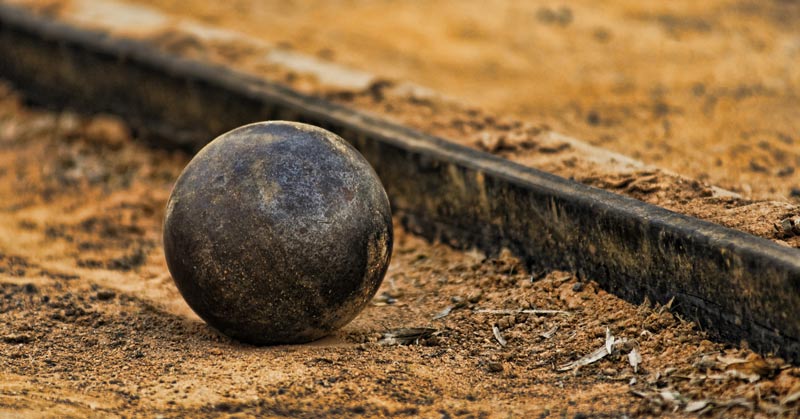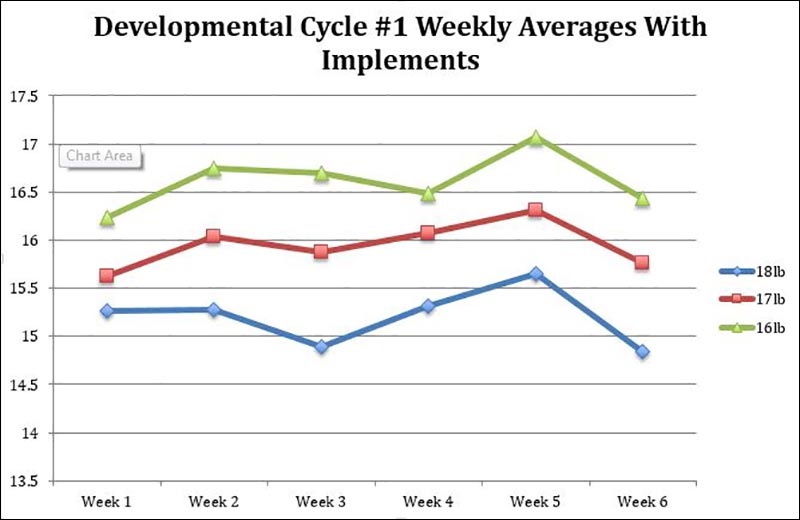
By Nick Garcia
The last article I wrote focused on defining each of the cycles that relate to Dr. Bondarchuk’s system as well as defining the exercises that go into each cycle. To review we now know that the exercises are classified as such: CE = Competitive Exercise, SDE = Specific Development Exercise, SPE = Specific Preparatory Exercise and GPE = General Preparatory Exercise. Furthermore, it was said that you perform 1-SDE, 2 SPE’s, and upwards of 4 GPE’s per cycle. As for the CE’s as many as three implements can be thrown and it is important that one of those implements is the competition weight.
When looking at the exercise classifications you may think to yourself there are so many movement selections per classification, how do I go about choosing the correct ones. To start beginners off I like to base my selections on the characteristics you are trying to build that cycle. For example, if I want to have a cycle based on speed, I would throw light implements and choose exercises that have more of a speed characteristic to them. For an SDE, I may choose to use a lighter object to perform the movement with rather than a heavy object. For my SPE’s I may choose a Snatch variation instead of a Clean variation and a Speed Step Up rather than a Squat variation. For my GPE’s I will use movements that generate more speed: Transverse/Twist: Med Ball Side Throw to Wall, Back: Kb Big Swing, Frontal: Side Ups, and Sagittal: Med Ball Slams. To sum it up the cycle would look like this:
- CE: Stand Throw 16lb x4, Full Throw 16lb x8, Full Throw 6K x8
- SDE: Med Ball Shoulder Punches: 3×5@20lbs
- SPE #1: Hang Snatch: 3×5@60%
- SPE #2: Step Up: 3×5@1 rep per second
- GPE Circuit: Side Throw to Wall x10e, Kb Big Swing x8, Side Up x10e, Slams x10
If I wanted a cycle to be more strength based rather than speed, I would switch my exercise selection up to represent that characteristic. Throwing heavier implements and choosing movements that have less of a speed element to them when comparing to other movements. It could look something like this:
- CE: Stand Throw 20lb x6, Half Turn Throw 18lb x6, Full Throw 16lb x8
- SDE: 50lb Med Ball Stand Throws: 3×5@50lbs
- SPE #1: Clean from Floor: 3×5@60%
- SPE #2: Trap Bar Deadlift: 3×5@60%
- GPE Circuit: Big Circles x10e, Good Mornings x8, KB Side Bends x10e, Ab Wheel x10
It would be my objective to perform both these cycles when first starting this type of training system. This is where the data collection comes in. During each cycle I would collect data from each throwing session marking the best throws with each implement and charting them in a spreadsheet. Once you get several sessions in you will begin to see a pattern of performance. This pattern is what will eventually tell you when you are in PEAK form. Furthermore, after completing both cycles, you can compare and contrast the differences in performance and determine if your athlete gets a better transfer from a speed-based cycle or a strength-based cycle.
In my opinion, finding out how your athlete reacts to these different characteristics can be very helpful in the future. For example, I had two athletes in the same year that were on the same system. However, after a few cycles I determined through data collection that one reacted better using light implements and the other using heavier implements. This allowed me to set up their final Developmental cycle leading into the important meets based on what works best for the individual. Both had personal bests at the biggest meet. Without the data collection, this may not have turned out the way it did.
Determine how an athlete reacts to different training stimulus to plan future training sessions. Share on XAbove are examples of how much you can get out of short-term data collection. When working with athletes for several years you can gather a great deal from the data other than just athlete’s reactions based on Speed or Strength based Cycles. Since I have the most data on myself, I will use the data collection from the last four years of my training to give you a few examples of how important data collection can be. Over these past number of years, I have determined that the 6K shot has a huge positive transfer for me with the competition implement. I know this because when looking at the data many of my best competition throws have come when I have used the 6K in Developmental/Maintenance/Cleansing Cycles. I have also determined that I can throw as heavy as an 18lb and as light as the 6K from full throws without hindering my technical rhythm. Anything heavier or lighter from a full is detrimental to my performance.
Does this mean I will never throw a 5k or 20lb in a cycle from fulls? Absolutely not. I still get benefit from doing them so I just don’t throw those implements during the competition season. I have also determined what lifts carry the most positive transfer for me. These would be the Clean-Grip Snatch and Speed Step Up. I know this because of the same reason I know what implements work best for me: DATA COLLECTION!!!!
Like I mentioned above the data will tell you when you are moving into peak form. When performing the cycles correctly, it should be the same for each cycle. Therefore, you can plan your meets according to your reactions. Personally, in a Developmental Cycle I have my best throws during sessions 4-6 and hit PEAK during sessions 16-22. This is like clockwork every time. I would plan meets during these sessions cause I know I will be on point. During a rest/cleanse cycle I also have a specific pattern. My best throws take place between 3-5 sessions and 18-20 sessions. I would plan meets within these sessions. I feel it is important to mention since I am older that my best competition throws come in the Rest/Cleanse phase. I still hit PEAK form in my Developmental Cycles but that extra rest I get coming off PEAK form into Rest/Cleanse I seem to react very well. Below is an example of what a typical developmental cycle may look like in data form:

Figure 1. My weekly averages for the Development Cycle.
The way I chart my throws is on a 4 to 5-session average. So week 1 could be considered 4-5 sessions, week 2 could be considered 8-10 sessions, and so on. This all depends on how many sessions I get done in a week, As you can see, my shot marks begin to rise at the end of week 3 which would be roughly 16 sessions and begins to drop after week 5 which is roughly 22-25 sessions. What is important is that you see a distinct peak for each implement. This is what tells you that you are in PEAK form. Note: These are all practice throws. I leave competition throws out because I normally get between a meter and meter and half conversion from practice to meet situations.
Detailed Data collection like this can help you perform your best at the right time. If you have any questions, feel free to email me at [email protected]
Martin Bingisser and I have produced 90 minutes of video to introduce coaches to the basics of transfer of training, special strength, and periodization. This online video course is available here on the HMMR Media website.
Please share so others may benefit.
[mashshare]



Nick- Have you tried to run your PDSF longer then the 5 weeks to see if you would of gotten another jump in performance? Bondarchuk and Evely mention in their work that it typically takes between 45-50 seasons to reach peak condition. How have your kids time to peak conditionioning changed when they throw shot and discus or do you have them do both each day? Thanks